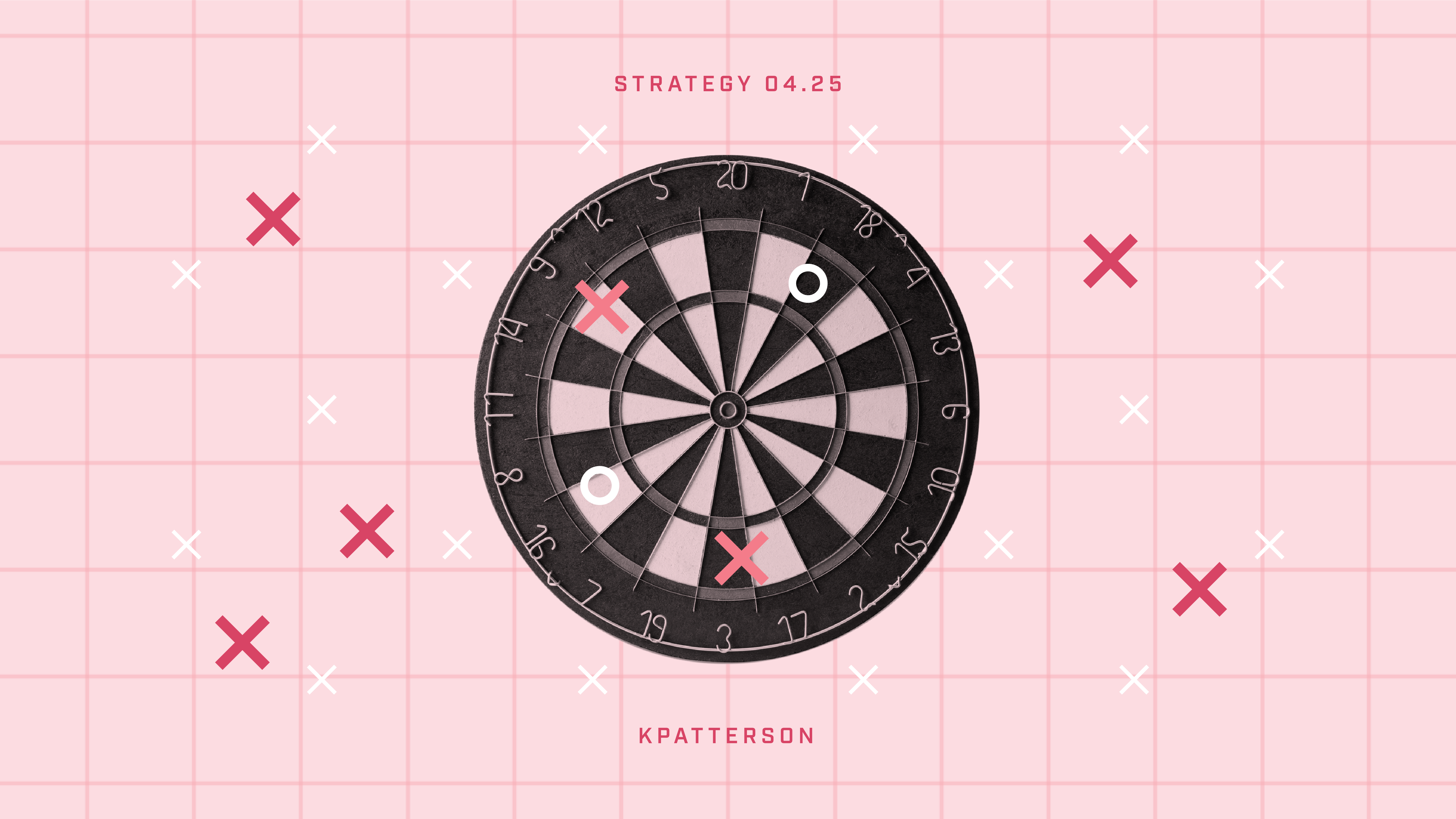Strategy doesn’t show up in QuickBooks. You won’t find it neatly categorized between software spend and ad budgets. But make no mistake: it’s the highest-ROI work most companies never prioritize.
Everyone loves execution.
It’s loud. Visible. Easy to measure.
But here’s the truth: Without strategy, execution is just expensive guessing.
In my experience, the companies most resistant to strategy are often the hardest to help. They want to skip the thinking and get straight to the doing, more campaigns, more features, more noise.
They confuse motion with progress.
And it shows.
These are the clients stuck in a loop: launching, tweaking, chasing, never pausing to ask why they’re doing any of it. No clear levers, no defined goals, just a dartboard full of activity and very little impact.
It’s why we don’t work with them anymore.
Because if you refuse to do the hard thinking up front, you’ll pay for it tenfold later, usually in time, morale, and missed revenue. And here’s the kicker: the refusal to start with strategy is rarely just a preference. It’s a symptom of deeper operational dysfunction. Misaligned leadership. No decision-making framework. A culture that values speed over clarity, and busy over effective. You don’t fix that with more execution. You fix it with strategy. (ironically?)
When I started the agency, the name of the game as any new business owner knows—was saying yes. A lot. Yes to quick turnarounds. Yes to half-baked ideas. Yes to being handed a to-do list instead of being invited into the strategy room. We were order takers. Not because we didn’t have the insight, but because we didn’t yet have the posture to ask why.
Why this campaign? Why now? What’s the goal? What does success look like, and how will we measure it? We weren’t pushing for benchmarks. We weren’t demanding clarity. And as a result, the work got done but the business outcomes? Inconsistent at best.
That changed. We learned the hard way: the projects with the biggest impact always started with strategy. The ones that flopped? They didn’t.
So we stopped saying yes to everything.
Stopped taking orders.
Started leading.
Now, every engagement begins with strategy because if we don’t know where we’re going, we’re not driving.
The result?
Clearer outcomes. Better clients. Real results.
Let’s talk about two real-life examples we’ve lived through:
Client A came to us for a new brand and website. But instead of jumping straight into deliverables, we started with strategy. We worked with their leadership team to define business goals, clarify their ideal customer, and identify what was getting in the way. We built alignment internally before anything went public. During our strategic workshop, we uncovered a deeper operational issue: their sales team was working with outdated data. Sales sheets were inaccurate, and no one trusted the numbers which made confident selling nearly impossible. So we built an automated system to keep that data up-to-date and instantly accessible. Their team could now walk into any client meeting with the right information, ready to close. We also set clear business goals and aligned their sales, marketing, and executive teams around what success actually looked like. Each quarter, we revisit the data. Annually, we lead a full-team workshop to push into their next growth stage—realigning goals, resetting priorities, and building the roadmap for what’s next. From there, the messaging got sharper. The offer got tighter. The brand reflected not just who they were, but where they were going.
When we launched, the difference was immediate. Leads increased. Sales conversations got shorter. Internally, the team stopped spinning and started scaling. Because everyone knew the goal and had the tools and alignment to support it. It wasn’t about doing more. It was about doing the right things, in the right order. That’s the power of starting with strategy.
Client B asked us to take over their media buying. We were a young agency, eager to prove ourselves so we dove in. No questions about business goals. No pain point analysis. No internal alignment check. Just ads. The result? Confused messaging, underperforming campaigns, and constant chaos. Internal stakeholders weren’t aligned, and without a strategy to anchor the work, everything felt reactive. At one point, we found ourselves spending hours debating where a single TV spot ran one line item in a seven-figure media buy. Conversations spiraled. Decisions stalled. And we didn’t yet have the confidence or the clarity to pull the conversation up to a strategic level.
This went on for years—unfortunately. Nothing changed.
They never defined success. They never set goals. They spent their days in business chaos, and eventually, they went out of business.
It wasn’t surprising. Because when you avoid strategy, the wheels eventually fall off.
We’ve done the projects without strategy. We don’t do them anymore.
Because strategy is the lever. The multiplier. The difference between busy and profitable.
So if you’re just looking for someone to take orders we’re not your team.But if you want a partner who helps you think better, work smarter, and actually grow, let’s talk.


